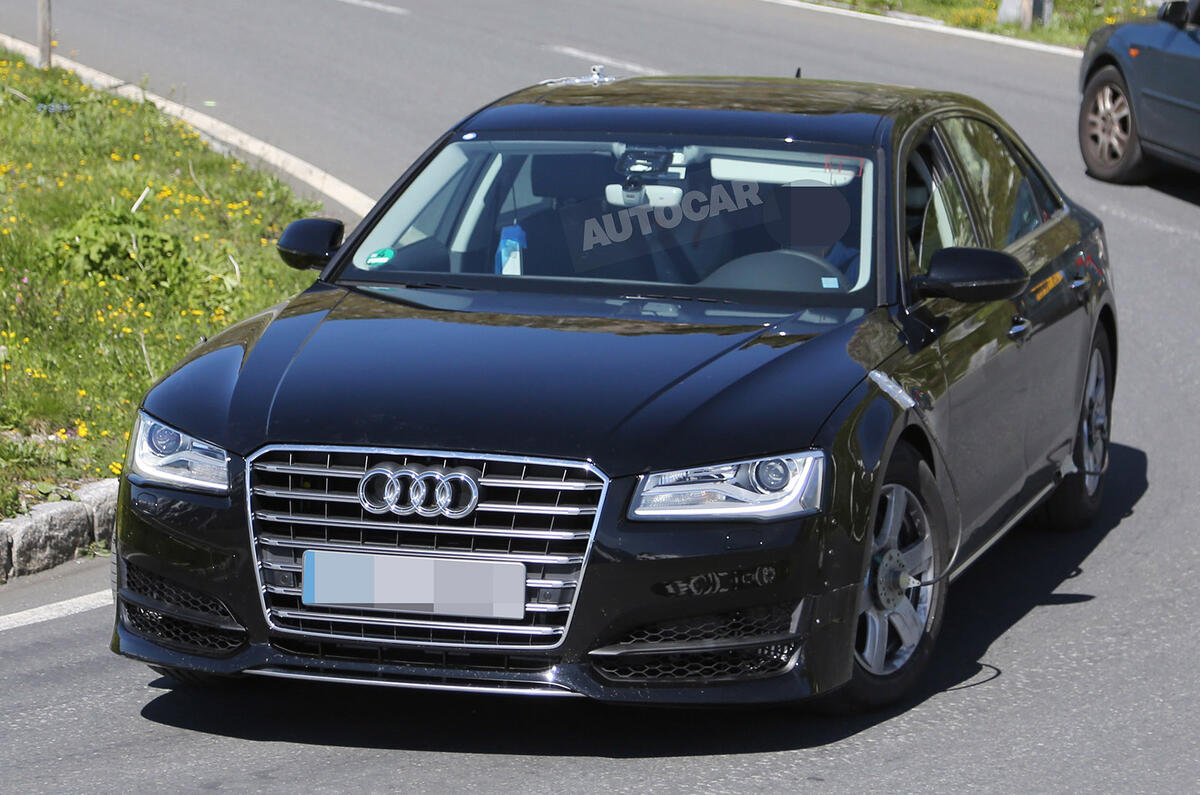Audi’s all-new A8 will be the first model to feature a ‘mild-hybrid’ transmission, according to Stefan Knirsch, the company’s new board member for technical development.
Due for launch in 2017, the new A8 gets a 48V electrical system, which works with a large Starter Generator Motor (SGM), a kind of super-sized alternator connected to the engines’s crank pulley with a large rubber belt, and a small lithium-ion back-up battery.
The SGM not only recharges the back-up battery, but can also help assist the engine via the rubber belt when the car is pulling away at low speeds. This helps reduce fuel consumption and can also lower exhaust pollution in certain driving situations.
Knirsch says the mild-hybrid transmission will be available with both petrol and diesel engines, and will be matched with new ‘electric compressors’ of the kind just revealed on the new Audi SQ7.
The compressors use energy from the back-up battery pack to blow air into the conventional turbochargers at very low engine speeds, which completely eliminates conventional turbo lag.
Knirsch wouldn’t give exact details about which A8 engines will gain the mild-hybrid and compressor technology, but it is expected that V6 engines will get the system first and, at a later date, smaller four cylinder engines will also benefit from the technology.
Eventually, the mild-hybrid systems will be used across the wider VW Group on Volkswagen Passat and Volkswagen Golf-sized cars. This new type of powertrain is significantly less expensive than a conventional hybrid and is relatively easy to retro-fit to a conventional internal combustion engine.
According to automotive engineering consultancy AVL, a typical 48v mild-hybrid should increase the power of an otherwise standard engine by around 20% and reduce CO2 output by around 15%.
These improvements will allow what Knirsch calls ‘rightsizing’ of engines. The upshot is that a future Golf, could, for example, use a 1.0-litre mild-hybrid petrol engine and electric compressor, to offer the same performance as a conventional 1.4-litre TSi engine with significantly better economy.
These new mild-hybrids, and conventional full-hybrid transmissions, will be an integral part of the VW Group’s plans for ‘piloted driving’. The company wants to use real-world information about roads and road conditions to further improve economy.
According to engineering consultancy AVL, mild-hybrid vehicles will be able to give us information, such as live traffic conditions and the road topography that can be used for various actions, including idling the engine and recharging the back-up battery while coasting downhill, restarting the engine while the car is moving and idling the engine in anticipation of approaching traffic signals that are turning red.




Add your comment